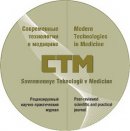
The Gamma-Glutamyl Transpeptidase Contents in Serum and Urine in Newborn as an Indicator of Disturbance Kidney Function Due to Asphyxia
The aim of the investigation was to evaluate the diagnostic value of the study serum and urinary contents of γ-glutamyl transpeptidase (GGTP) in newborns with impaired renal function due to asphyxia.
Materials and Methods. Investigation included 200 full-term newborns with disturbance kidney function: 100 infants who had severe asphyxia, and 100 — with moderate asphyxia. Comparison group consisted of 20 healthy children without asphyxia. The peripheral venous blood and urine of newborns were picked up by 1–2, 7–8 and 25–30 days of life. GGTP activity was determined by a standardized method of “endpoint” after rate of formation of 5-amino-2-nitrobenzoate at 405 nm and 37°C on the semi-automatic photometer using reagents of Olvex Company (Russia).
Results. Disturbance kidney function in neonates with asphyxia causes a significant increase the level of GGTP in serum and urine in the first 24–48 hours after birth. Enzyme concentration in biological fluids during this period in the groups of surveyed children was the highest. In the dynamics of the early neonatal period marked reduction of GGTP in serum and urine in children with kidney dysfunction due to asphyxia. By the end of the neonatal period the enzyme content in serum and urine in neonates with asphyxia and disturbance kidney function remained high. In infants with renal impairment due to moderate asphyxia during the first weeks of life ratio of serum/urine GGTP content decreased less than 2.5 relative to the comparison group, followed its raised to 25–30 days of life. At the same time, infants with severe renal impairment due to asphyxia were characterized by high rates ratio (greater than 4.0) during the whole neonatal period. In the examined groups of children during the early neonatal period indicated a statistically significant positive moderate correlation between the serum and urinary GGTP content.
Conclusion. Serum GGTP activity is characterized severity of cytolysis syndrome of proximal renal tubular epithelium in neonates with disturbance kidney function due to asphyxia. Noninvasive determination of GGTP levels in the urine in the early neonatal period, preferably for the screening of renal problems in neonates with asphyxia.
- Targher G. Elevated serum gamma-glutamyltransferase activity is associated with increased risk of mortality, incident type 2 diabetes, cardiovascular events, chronic kidney disease and cancer — a narrative review. Clin Chem Lab Med 2010; 48(2): 147–157, http://dx.doi.org/10.1515/CCLM.2010.031.
- Whitfield J.B. Gamma glutamyl transferase. Crit Rev Clin Lab Sci 2001; 38(4): 263–355.
- Khodyreva L.A. Kliniko-laboratornye aspekty diagnostiki, techeniya i prognoza mochevoy infektsii. Avtoref. dis. … dokt. med. nauk [Clinical and laboratory aspects of diagnosis, course and prognosis of urinary infection. Dissertation for the degree of Doctor of medical science]. Moscow, 2007.
- Loeb W.F. The measurement of renal injury. Toxicol Pathol 1998; 26(1): 26–28, http://dx.doi.org/10.1177/019262339802600103.
- Lee D.H., Jacobs D.R. Association between serum gamma-glutamyltransferase and C-reactive protein. Atherosclerosis 2005; 178(2): 327–330, http://dx.doi.org/10.1016/j.atherosclerosis.2004.08.027.
- Joy R., Pournami F., Bethou A., Bhat V.B., Bobby Z. Effect of therapeutic hypothermia on oxidative stress and outcome in term neonates with perinatal asphyxia: a randomized controlled trial. J Trop Pediatr 2013; 59(1): 17–22, http://dx.doi.org/10.1093/tropej/fms036.
- Kulikova N.Yu. Kliniko-funktsional'naya kharakteristika ishemicheskoy nefropatii u donoshennykh novorozhdennykh, nakhodyashchikhsya v kriticheskom sostoyanii (mekhanizmy formirovaniya, prognozirovanie, rannyaya diagnostika, profilaktika, korrektsiya). Avtoreferat dis. ... dokt. med. nauk [Clinical and functional characteristics of ischemic nephropathy in full-term newborns being in critical condition (mechanisms of formation, prognostication, early diagnosis, prevention, correction). Dissertation for the degree of Doctor of medical science]. Ivanovo, 2011.
- Lapach S.N., Chubenko A.V., Babich P.N. Statisticheskie metody v mediko-biologicheskikh issledovaniyakh s ispol’zovaniem Exel [Statistical methods in medicobiological investigations with application of Excel program]. Kiev: MORION; 2001; 408 p.
- Spravochnik po laboratornym metodam issledovaniya [Handbook on laboratory methods of investigation]. Pod red. Danilovoy L.A. [Danilovf L.A. (editor)]. Saint Petersburg: Piter; 2003; 736 p.
- Nikulina G.G., Korol’ L.V., Migal’ L.A. Enzymes as markers of cellular membrane pathology in kidney diseases. Ukrainskiy zhurnal nefrologii i dializa 2004; 1: 30–33.
- Lieberman M.W., Barrios R., Carter B.Z., Habib G.M., Lebovitz R.M., Rajagopalan S., Sepulveda A.R., Shi Z., Wan F. Gamma-glutamyl transpeptidase. What does the organization and expression of a multipromoter gene tell us about its functions? Am J Pathol 1995; 147: 1175–1185.
- Chatterjee P.K., Cuzzocrea S., Brown P.A.J. Zacharowski K., Stewart K.N. Tempol, a membrane-permeable radical scavenger, reduces oxidant stress-mediated renal dysfunction and injury in the rat. Kidney Int 2000; 58(2): 658-673, http://dx.doi.org/10.1046/j.1523-1755.2000.00212.x.
- Herget-Rosenthal S., Poppen D., Hüsing J., Marggraf G., Pietruck F., Jakob H.G., Philipp T., Kribben A. Prognostic value of tubular proteinuria and enzymuria in nonoliguric acute tubular necrosis. Clin Chem 2004; 50: 552–558, http://dx.doi.org/10.1373/clinchem.2003.027763.
- Guder W.G., Ross B.D. Enzyme distribution along the nephron. Kidney Int 1984; 26(2): 101–111, http://dx.doi.org/10.1038/ki.1984.143.
- Li Y., Fu C., Zhou X., Xiao X., Zhu X., Jin M., Li X., Feng X. Urine interleukin-18 and cystatin-C as biomarkers of acute kidney injury in critically ill neonates. Pediatr Nephrol 2012; 27(5): 851–860, http://dx.doi.org/10.1007/s00467-011-2072-x.
- Lisowska-Myjak B. Serum and urinary biomarkers of acute kidney injury. Blood Purif 2010; 29(4): 357–365, http://dx.doi.org/10.1159/000309421.
- Westhuyzen J., Endre Z.H., Reece G., Reith D.M., Saltissi D., Morgan T.J. Measurement of tubular enzymuria facilitates early detection of acute renal impairment in the intensive care unit. Nephrol Dial Transplant 2003; 18: 543–551, http://dx.doi.org/10.1093/ndt/18.3.543.
- Simon J., Amde M., Poggio E.D. Interpreting the estimated glomerular filtration rate in primary care: benefits and pitfalls. Clev Clin J Med 2011; 78(3): 189–195, http://dx.doi.org/10.3949/ccjm.78a.10057.










